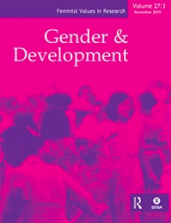‘Yes caste is important, (but)’: examining the knowledge-production assemblage of Dwij-Savarna scholarship as it invisibilises caste in the context of women’s prisons in India

Overview
Gayatri Spivak, Partha Chatterjee, and many other Dwij-Savarna (‘upper caste’) academics from historically privileged ‘Dwij-Savarna’ Indian castes like Brahmins pioneered subaltern studies in the context of South Asian studies. Their thrust towards decolonising led to an epistemic de-centring of Western hegemony in knowledge production on behalf of marginalised ‘subalterns’. However, Umesh Bagade points out that caste is not a homogenising identity and the politics of ‘Dwij-Savarna’ scholars themselves must be interrogated through an epistemic lens. With the exception of Sharmila Rege, very few Dwij-Savarna feminists have interrogated their caste privileges with respect to gender studies. As a result, a vast majority of gender studies work in India invisibilises epistemically the experienced marginality of women from oppressed castes and tribes. One such discipline where this is particularly visible is prison studies, where the scholars come from privileged ‘Dwij-Savarna’ communities and interrogate the social issues of the incarcerated who come predominantly from marginalised caste backgrounds. Our research interviews five leading Dwij-Savarna prison studies scholars who dialogue with intersections of carcerality and women’s issues. We engage with them about their work and conceptual perspectives on the role of caste, particularly in the context of gender. The researchers found that the Dwij-Savarna scholarship largely overlooks caste and refuses to engage with vulnerability and marginality issues emanating from caste locations within the prison system, doubly invisibilising the lives and narratives of the caste-oppressed women inside.
Keywords
Additional details
Author(s)
Publisher(s)
Editor(s)
ISBN
1355-2074How to cite this resource
Citation styles vary so we recommend you check what is appropriate for your context. You may choose to cite Oxfam resources as follows:
Author(s)/Editor(s). (Year of publication). Title and sub-title. Place of publication: name of publisher. DOI (where available). URL
Our FAQs page has some examples of this approach.
